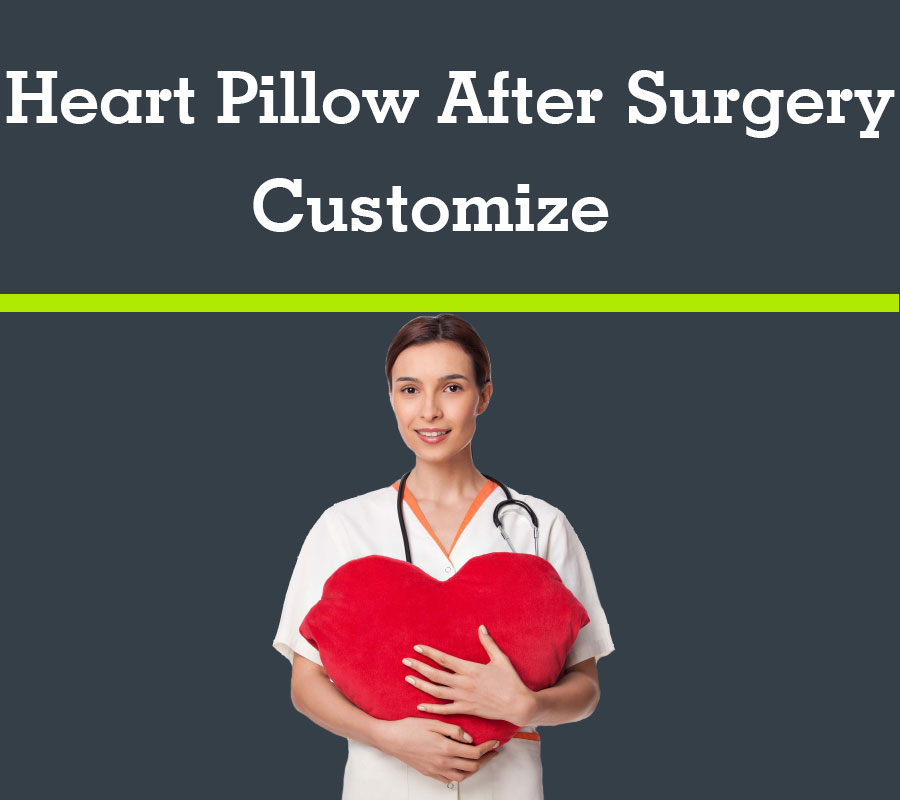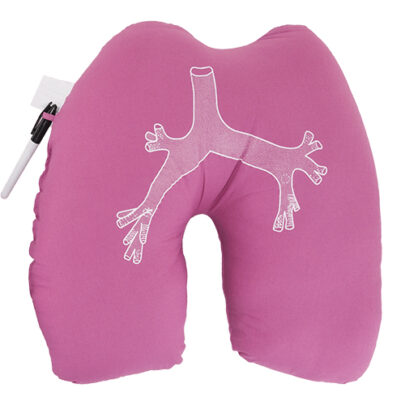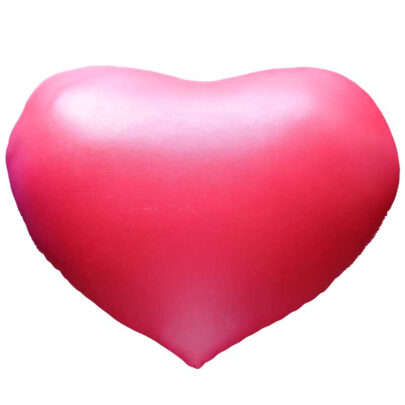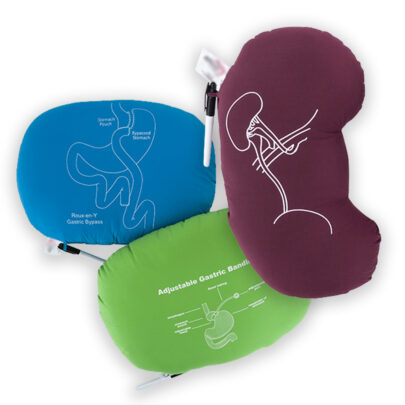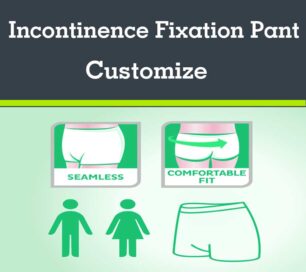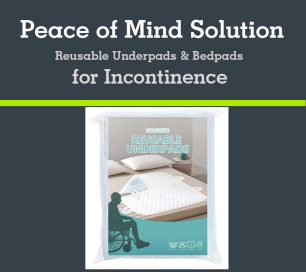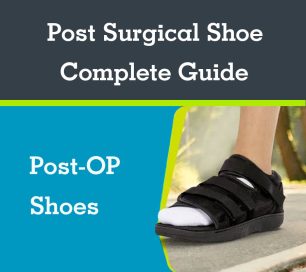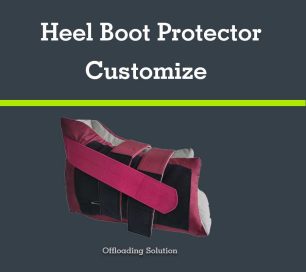Last Updated on 3 years by admin
Metacare is a manufacture & supplier, provides Customized design The heart pillows service, these pillows are given to patients immediately post-op to aid in recuperation.
Heart pillows (also known as cough pillows or cardiac pillows) are heart-shaped pillows often provided by hospitals to patients following sternotomy procedures.
Heart pillows have been used for decades and have become a tradition within cardiac care. The use of such pillows as a source of sternal support during coughing or sneezing has been integrated into post-surgical care procedures at many institutions; post-care guidelines advise the patients to begin use of the pillow following surgery and to continue its use during the entire recovery period.
The heart pillows for heart/Breast Cancer surgeries
it provides proven medical support and improves healing for patients recovering after surgery.
Powerful Benefits:
- Help patients heal
- Provide education and an emotional connection
- Give patients consistent sternal support for improved healing
- Reduce pain during coughing, deep breathing and moving
- Use customized imprints and diagrams as easy-to-understand educational tools
- FACILITATES A SMOOTH HEALING – Heart-to-heart hug provides an extra layer of pressure to counteract any cough, sneeze or movement. It helps reduce pain because it holds the incision and sensitive skin surrounding the incision firmly in place.
- EXTRA SUPPORT WHILE COUGHING – Filled with firm stuffing, so a squeeze won’t squish them flat like a stuffed animal. Firm enough to support your chest when coughing, breathing, or sneezing. This pillow has the right kind of support you need.
- OFFERS ULTIMATE CARE AND COMFORT – This heart pillow makes movement more manageable for patients who’ve undergone surgery. In that way, the pillow will always keep you safe and protected on your drive back home or in bed.
- PERFECT SIZE TO COVER YOUR CHEST- Unlike normal pillows, the wide shape of the heart provides better chest coverage to support the healing process. Our heart pillow measures about 17 inches wide and 15 inches tall. Perfect size to cover your chest!
- THOUGHTFUL GIFT – Gift for someone who is facing heart surgery, hysterectomy, lung surgery, liver surgery, kidney surgery, abdominal surgery. A great way to support and care for your friend/family during the healing process.
That’s Why we get a heart pillow after surgery!
Where is the Clinical Evidence for the Use of Heart Pillows?
Heart pillows may be purchased commercially through a promotional product company. In other cases, heart pillows are handmade by volunteers or family members. Pillows may bear “get well soon” messages from the hospital staff and may be accompanied by a marker for friends and hospital staff to sign during the post-surgical recovery period. Many patients treasure these pillows as mementos long after their scars have healed.
The broad integration into post-surgical care guidelines and medical claims made by some heart pillow manufacturers should lead one to expect that the use of the pillow as a form of sternal support has been evaluated. One promotional product distributor that sells heart pillows online claims that heart pillows provide “uniform, effective sternal support to aid in healing” and “pain reduction during coughing, deep breathing, and moving about”.If the heart pillow is a medical device that provides sternal support, aids healing, and reduces pain, the marketing claims should be supported by clinical evidence of safety and effectiveness.
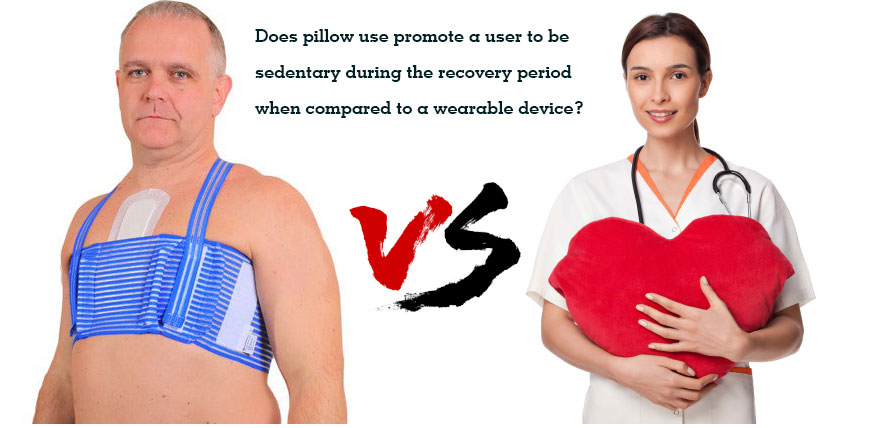
In this day of “evidence-based medicine” and a laser focus on reducing complications (thereby reducing costs to both the hospital and the patient), the heart pillow seems to have slipped through the cracks. Perhaps due to the tradition of use, or perhaps due to the likability and sentimentality of the heart pillow, it has maintained popularity in cardiac centers throughout the United States. (What’s not to love about a medical device you can hug?) Other than patient anecdotes on heart pillow websites, describing how much the patients like the heart pillow, there seems to be little evidence to suggest that the pillow is effective when used as a therapeutic aid.
In order to identify any existing evidence supporting the safe and effective use of heart pillows as a post- sternotomy recovery aid, we performed a PubMed search using the following keywords: “heart pillow”, “cough pillow”, “chest pillow”, “sternum splinting”, “sternum support”, “sternal support”, “self-hugging”, “postoperative sternum” and “postoperative sternal”. No publications examining the use of the heart pillow were identified using any of the search terms. A general online search for white papers or other information published online likewise did not identify any evidence supporting the safety or efficacy of heart pillows used in post-operative care. While the use of heart pillows in local post-surgical practice is common, there are likewise no accepted evidence-based guidelines for post-surgical care.
“Post-operative care must be examined and evidence-based best practice guidelines established.”
Despite an improvement in surgical techniques, the rate of post-sternotomy complications has remained relatively stable for decades. This may, in part, be accounted for by research bias, as early research limited complication reporting to complications immediately post-surgery. More recently, the rates of complications during the recovery period following discharge have also been examined and represent a significant burden to patients’ quality of life and the healthcare system. At 90 days following sternotomy, deep sternal wound infections (DSWI) occur in 0.3% to 7.3% of patients, 8-79% of patients experience ongoing pulmonary complications, and persistent pain affects 11-56% of patients. (Lack of established definitions and classification systems makes a comparison of data among institutions difficult). The per-patient cost of DSWI treatment is $41,500-$88,800; pulmonary complication, $28,700; and persistent pain, $4500-$7700. If post-surgical complication rates and health care costs during the recovery period are to be reduced, post-operative care must be examined and evidence-based best practice guidelines established.
While there is a lack of published evidence supporting the use of the heart pillow in the reduction of pain, it is generally accepted that hugging the pillow when coughing reduces pain, which may improve the quality of coughs and promote bronchial clearance. Additional factors need to be considered, however, when comparing the pillow to wearable devices, such as support harnesses or other external chest supports, which have been demonstrated to reduce patient-reported pain during coughing. The performance of the heart pillow in pain reduction and the effect of pillow use on other aspects of recovery need to be considered within an actual use environment.
Imagine, if you will, a simple study: post-surgical patients are asked to hold a pillow or apply an external chest support device. Patients are asked to cough and rate their pain. Both devices may perform well in reducing the perceived pain experienced during the cough. The pillow users may even experience a “bonus” reduction in pain because their device is cute!
Now, let’s extend the study and send the pillow cohort and chest support cohorts home. Seated in front of the TV, both cohorts make use of their devices and experience pain-relief benefits. The pillow user, however, cannot make use of his pillow when performing self-care activities or other activities of daily living. What happens when a pillow patient feels a sneeze coming on? Does he reach across the couch for his pillow? Does he reach to the floor, where the pillow fell when he stood up? If the pillow is only effective when the user is holding the pillow, does pillow use promote a user to be sedentary during the recovery period when compared to a wearable device? How does the pillow retrieving motions affect the sternal gap? How do the devices compare in the promotion of sternal stability?
The external support user, who is wearing her device, has constant access to the pain relief mechanism as she goes about her activities of daily living. The wearable device moves with her to the bathroom; the pillow user must either go without the pillow or perhaps bring the pillow along and place it on a contaminated sink surface. How do post-surgical infection rates compare for users of the two device types? May the constant pillow contact with environmental surfaces (in the home, car, and clinic) promote the transfer of bacteria to the surgical wound?
“The heart pillow must be relegated to the hospital gift shop and used as a memento, rather than as a medical device.”
If post-surgical complication rates are to be reduced, it is necessary to examine all aspects of the post-care regimen and to develop established evidence-based guidelines for post-sternotomy care. Unless research supports the safe and effective use of the heart pillow as a therapeutic aid, the heart pillow must be relegated to the hospital gift shop and used as a memento, rather than as a medical device.
Heart Pillow Project!
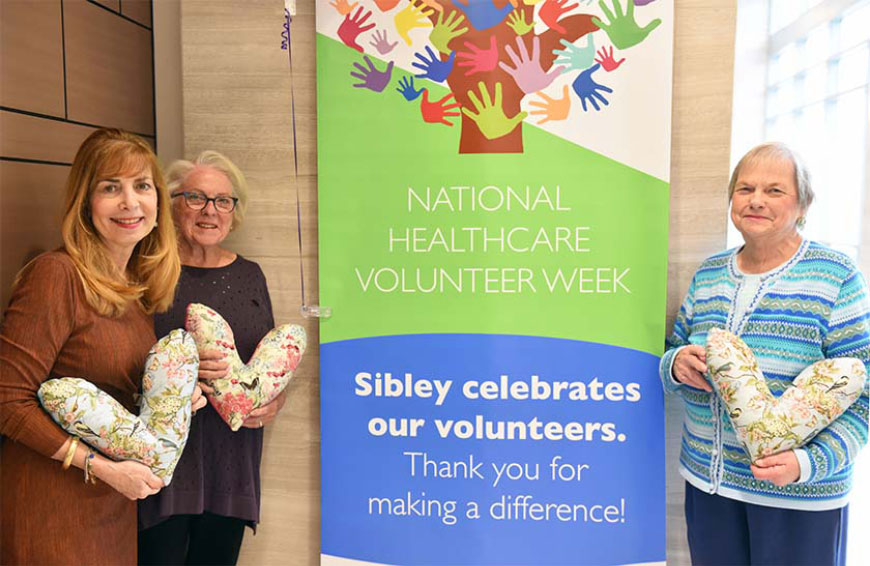
The Heart Pillow Project is designed to bring comfort to breast cancer patients. It’s a story about the journey of breast cancer patients and a network that crosses many boundaries and settings.
The origin of the heart pillow is unknown, but the project started when Janet Kramer-Mai, an oncology nurse at Erlanger Medical Center in Chattanooga, Tenn, was diagnosed with breast cancer in 2001. Three of her aunts made and sent her a heart-shaped pillow to use after her surgery. The pillow, which fits comfortably under the arm, can relieve pain from the surgical incision, protect against accidental bumps, help ease edema and relieve shoulder tension. The heart pillows are given to patients immediately post-op to aid in recuperation.
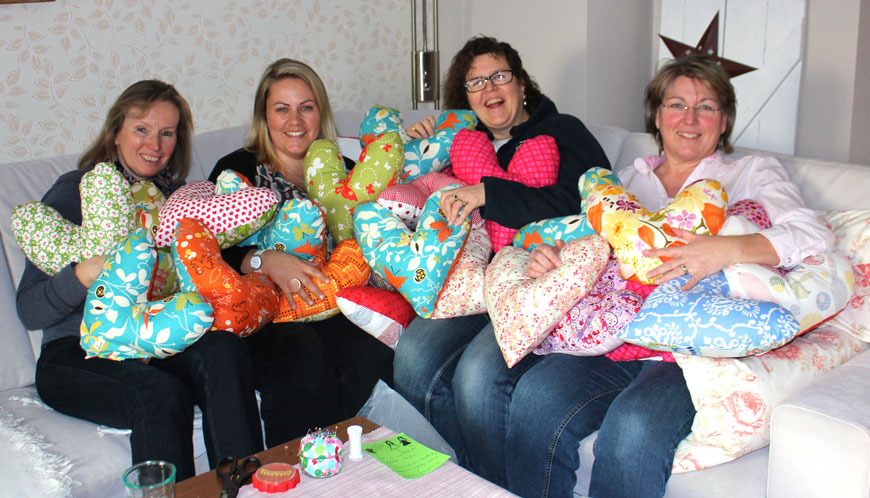
There are many benefits to the heart pillow. It gives the opportunity to help breast cancer patients in a concrete and immediate way. With this gift, patients know they aren’t alone and others are thinking of their needs, even if they don’t know them personally.
Martha Gudina, one of Sibley’s OR nurses, went to an international conference and was inspired by this project and asked if our volunteers would like to participate. Of course, they said yes!
FQA (frequently questioned answers)
Why do cardiac patients get a heart pillow?
When a patient holds the heart pillow tightly against his or her chest, the pillow provides an extra layer of pressure to counteract any jolting from a cough, sneeze or movement. It helps reduce pain because it holds the incision and sensitive skin surrounding the incision firmly in place.
Do you get a heart pillow after heart surgery?
The heart pillow is provided by many hospitals to be used after heart surgery or sternotomies. Heart pillows used after surgery are meant to give patients something to hold to their chest when they need to cough or sneeze or to try and help alleviate some pain.
What is a coughing pillow?
Cough Pillows are used by cardiac surgical survivors and other surgical patients to reduce pain when they move, particularly when they cough or sneeze.
What is a lung pillow?
This patented pillow is designed to specifically reduce pain during deep breathing, coughing, and moving after thoracotomy and transplant surgeries.
Can you wash therapedic pillows?
Most pillows also come with covers that can be washed in a washing machine. Set the machine on a cold setting and use mild detergent. Avoid using harsh stain removers or chlorine products. When drying the covers, set the dryer on a cool setting or simply dry it on a clothesline.

